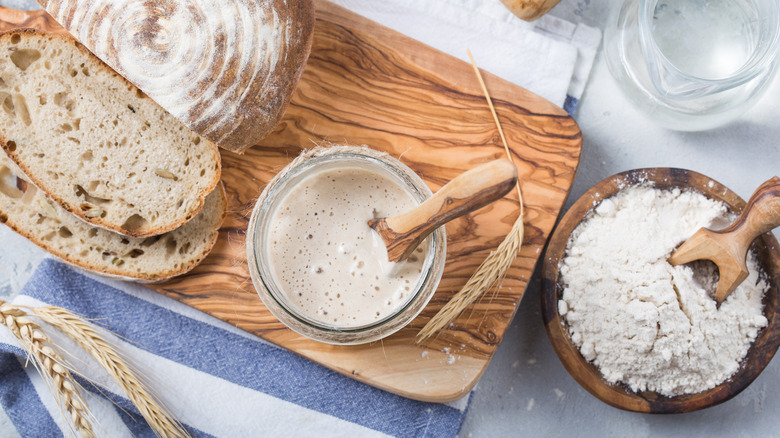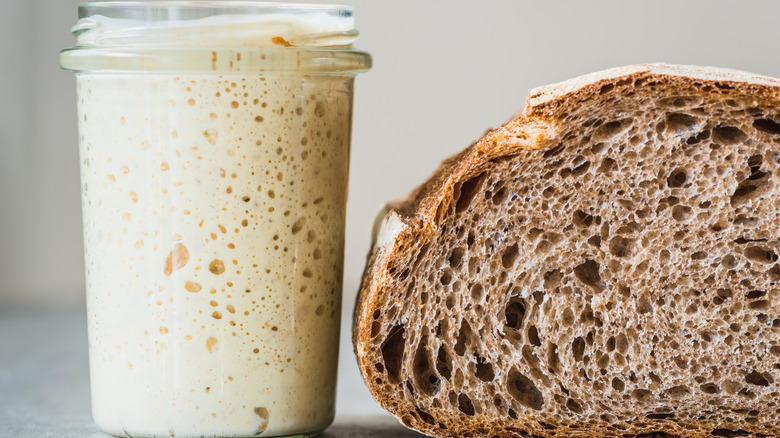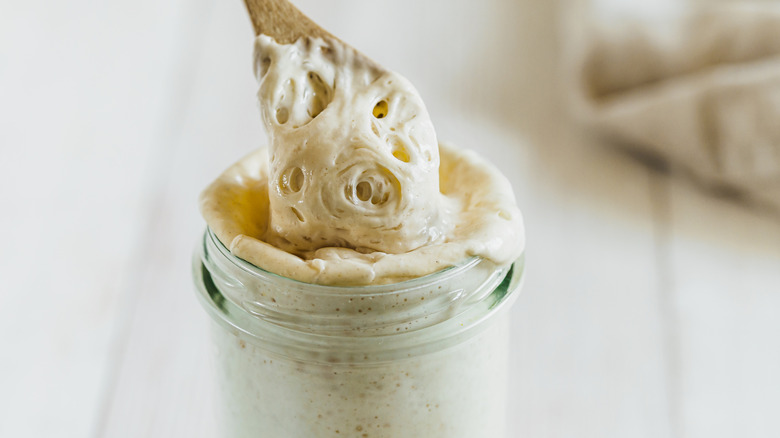The Key To Making A Sourdough Starter In A Snap
We may receive a commission on purchases made from links.
Sourdough is a prized type of yeast bread that has been around for centuries. In the American West pioneer days, sourdough was the primary way bakers made yeast bread via JSTOR Daily and in Alaska. It's most famous in San Francisco, where the strain of yeast and one particular strain of bacteria in the air, according to CBS News, make a particularly pungent and flavorful bread unique to that area. But you can make your own sourdough anywhere.
To make sourdough bread, you need what's called a starter. That is a mixture of flour, water, and yeast that has been allowed to ferment for days until it is literally sour from the lactic acid byproducts of the yeast feeding on the sugar in the flour, per Scientific American.
There are a few ways to get this prized mixture. You can mix flour and water and let it sit out on your counter, hoping you'll trap some wild yeast, according to Alton Brown. You can mix flour and water and add some unwashed organic grapes, according to King Arthur Flour. Or for less of a wait, the key to making sourdough starters in a snap is very easy.
Easy sourdough starter
All you need to make your sourdough starter is a ¼ teaspoon of active dry yeast, flour, water, and time. Combine the yeast with a cup of bread flour and water in a glass or ceramic bowl. Mix well and let the mixture stand at room temperature overnight.
The mixture should smell yeasty and kind of sour and should be very bubbly and light. That's sourdough! You can use this starter in any sourdough bread recipe if you follow a few rules.
First, never use all of the starter. You should take out about half every time you bake; then, you have to "feed" the starter. That means you add more flour and warm water, so the yeast has something to eat. The longer you keep the starter going, the more flavorful it will become. If you don't feed and replenish the starter, the yeast will start to produce alcohol, according to MasterClass, which will add a harsh, undesirable flavor.
Make some sourdough bread
Store your starter in a glass jar on the counter first, then move it to the fridge, per Martha Stewart. Keep it covered, so it doesn't dry out or absorb unwanted flavors. It's best to use the starter at least once a week, but that shouldn't be a problem because who doesn't love homemade bread? If you don't want to make bread that often, you can give away some starter as a present or discard half and add more flour and water to keep it going. (If, however, you have forgotten about it, you can still revive the starter.)
Look in any bread cookbook to find recipes for using sourdough starters. You can also try this easy recipe for no-knead sourdough bread or this one for San Francisco sourdough bread. You can even make sourdough scones! And then use your own delicious and chewy homemade sourdough bread to make fabulous French toast or this fantastic recipe for sourdough sharing bread.


